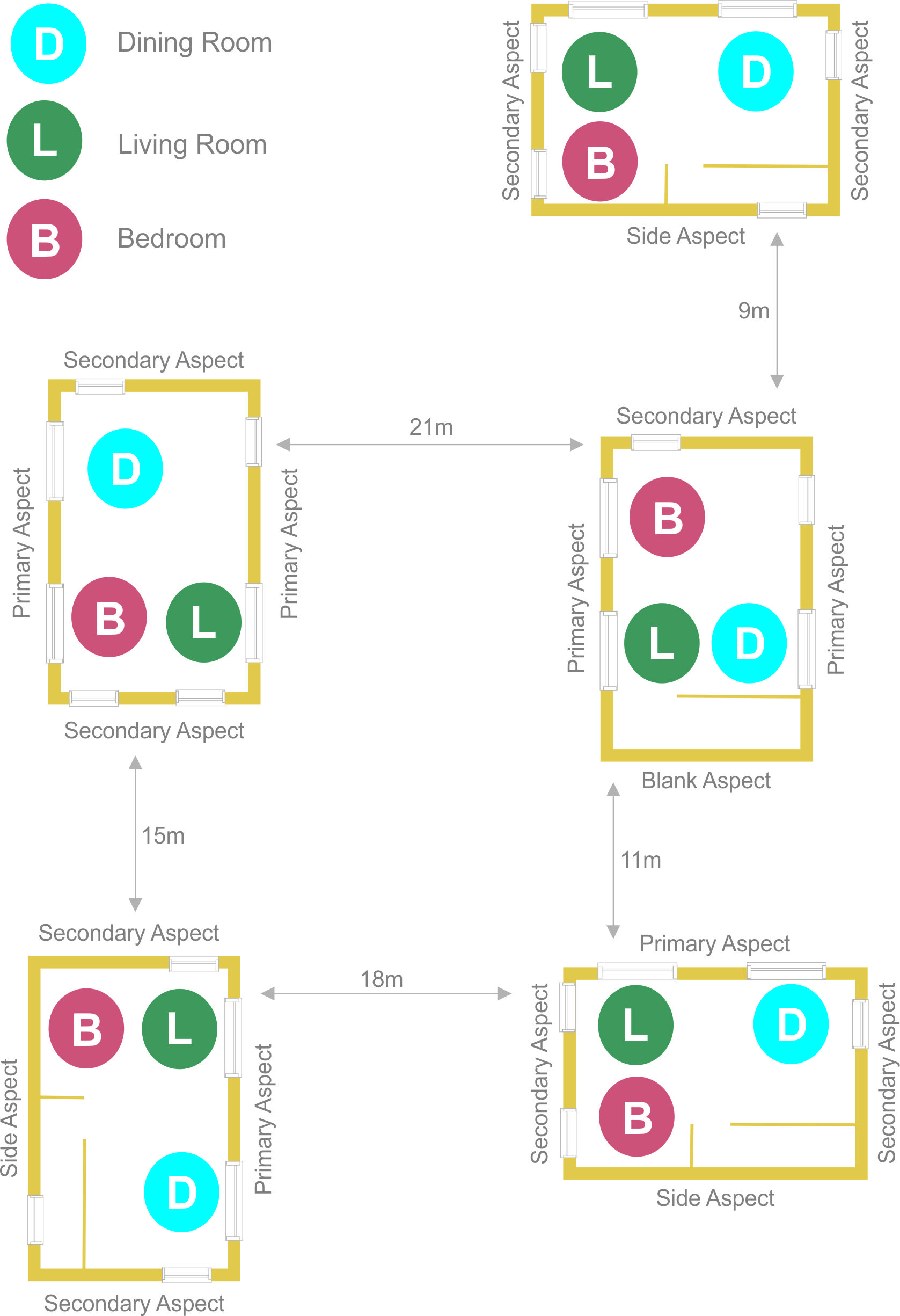When drawing up proposals, applicants, agents and developers should have regard to the space standards set out in the National Planning Practice Guidance. Local Plan Policy also outlines how new dwellings should provide acceptable residential amenity in relation to both external and internal living space. It also advises that proposals should not have a significantly detrimental effect on the residential amenity of nearby occupiers. Residents must have the right to adequate privacy levels and to be kept free from excessive noise and unwanted social contact.
The position of dwellings, and the arrangement of their rooms and windows, should not create significant overlooking of other dwelling windows or private garden areas, nor should they lead to any overbearing impacts upon existing dwellings.
Awkward size gardens should be avoided in order for them to be usable and enjoyed. It is important to think about the orientation of these spaces. Making sure gardens are not overshadowed by outbuildings or garages, making the most of light available. Where no private individual gardens are proposed for apartments, private communal gardens should be provided, normally to the rear of blocks.
The Council will therefore look for layouts to take account of the following criteria in order to achieve satisfactory standards of amenity.
Aspect Related Standard |
Distance (m) |
Reason |
| Primary to Primary | 21 | Protection of residential amenity |
| Primary to Secondary | 18 | Protection of residential amenity |
| Primary to Side | 12 | Protection of residential amenity and maintenance |
| Primary to Blank | 11 | Protection of residential amenity |
| Secondary to Secondary | 15 | Protection of residential amenity |
| Secondary to Side | 9 | Protection of residential amenity and maintenance |
| Secondary to Blank | 8.5 | Protection of residential amenity and maintenance |
| Side to Side | 3 | Protection of residential amenity and maintenance |
| Side to Blank | 2.5 | Maintenance |
| Side to Boundary | 1.5 | Maintenance |
Definitions
- Primary Aspect: Main windows to living and dining rooms.
- Secondary Aspect: Windows to bedrooms and secondary windows to living and dining rooms
- Side Aspect: Windows to non-habitable rooms e.g. halls, kitchens, utility room and bathrooms.
- Blank Aspect: Windows to enclosed walls with no openings.

Amenity Distances Plan
The 45 Degree Tests
This 45 degree tests are a simple way of calculating the imapact of an extension on loss of light and overshadowing. To calculate the first rule, take the plan of the proposed extension, and from the midpoint of the neighbour's protected window draw a line at 45 degrees. The proposed extension should not project beyond the 45 degree line. Secondly, draw a line at 45 degrees to the horizontal. The proposed extension should not project beyond the 45 degree line. If the protected window is a full height window such as a patio door, then the 45 degree line is drawn at a point 2 metres above ground level. A significant amount of light is likely to be blocked if the centre of the neighbouring window lies within 45 degree angle on both plan and elevation.
The plan below shows the assessment of impact on overshadowing of a proposed extension on the windows of an adjacent property, the following applies:-
- A,B and C are the centre points of ground floor windows
- A unacceptable impact (obscured by areas 1 and 2)
- B may be unacceptable (obscured by area 1)
- C acceptable (unaffected by areas 1 and 2)
- Two-storeys are likely to be unacceptable
If the centre of the existing window lies within the 45 degree lines (on plan and/or elevation) then a more detailed daylight and sunlight assessment will be required.

Talking to your Neighbours
If planning permission is required for you extension, your neighbours will be informed of the proposals and will have the opportunity to view, comment on, object to or support your application submission. The documents you submit as part of the application will be available to the public via the Council's website. Whilst there is no obligation to discuss your proposals with your neighbours, it is always good practice to positively engage early in the process. Explaining your ideas to neighbours in an informal way, and considering their comments, can help to create a smoother and more positive process in the long run.